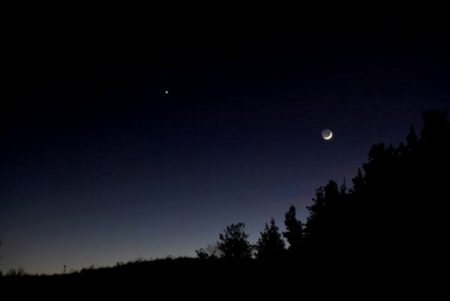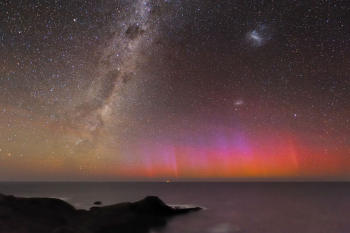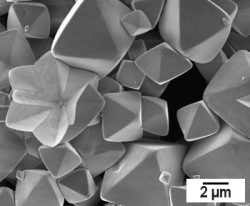
These photons are just for you

One of the first things which really attracted me when I was a child was the night sky. Maybe that happened because I was born in a very cloudy and rainy area where blue skies during the day and a starry sky at night are not very frequent. Looking at the stars at night when I was a child was a way to feel that “there was more space available”. I still have the first astronomy book I read when I was 12 or 13 years old. Later, I got my first telescope and I really enjoyed exploring many astronomical objects, from planets to galaxies, scattered across the sky. I spent many long nights under the sky –sometimes alone, sometimes with good friends– observing a large number of galaxies, nebulae, star clusters, comets, planets and moons. These are sights which I will never forget.
I would like to suggest something which may help you understand this feeling. Find some time for yourself at night and go to a dark place to see the night sky for at least five minutes. You will see a number of stars; maybe some of the planets of our solar system –they are bright and can be easily spotted. Many of the questions which as geochemists we try to answer may be hidden in these planets and their moons. However, a fast look at the night sky may be even more encouraging when you discover what is directly ‘hitting’ you. You may see a few hundreds stars with your naked eye, but actually the photons of thousands of millions of objects -many of them amazingly huge and as old as the Universe itself- are beaming light directly to your eyes. Our eyes are not sensitive enough to detect or perceive all of them, but photons from galaxy clusters, nebulae, star clusters, planets or asteroids are constantly arriving. Even if you do not see them, they reach your eyes. All that light has travelled billions of years just to meet you and nobody else. It interacts with the living cells of your eyes and their long trip comes to an end. The apparent quiescence of the universe is actually a storm of photons, energy flowing everywhere and reaching us. Some of these photons come from close by regions of the solar system. Others were produced when the Earth and our solar system were not even born and they may have been travelling half the way across the Universe. You only need to enjoy a nice view of the night sky and the photons, which were produced over the whole life of the universe will finish their long billion-year trip arriving to your own eyes, putting you in touch with the universe.
These photons –the “visible” and “invisible” ones– are carrying information about many processes which make the universe the way it is. However there are things which will be always hidden to our eyes. Photons from galaxies at the visible edge of the Universe will reach your eyes, but none from the hidden face of the moon will find you. So close, yet so far. We know what the hidden face of the Moon looks like because humankind has found a useful way of obtaining information: science. After centuries of scientific and technological evolution, we are starting to understand many processes, which occur in the universe because humankind is able to develop instruments, methods and strategies to obtain information.

From my point of view, geochemistry is a branch of science which works in a similar way to astronomy and astrophysics. Astrophysicists try to understand what happens at the atomic –and at a much smaller– scale in order to comprehend the universe. They use telescopes and particle accelerators to obtain information about processes at many, many different length scales. As geochemists we do something similar: in order to understand big things –for example, the changes in ocean chemistry, the climatic history of our planet, or the way some living organisms make huge deposits of minerals– we need to explore the small scale of things. That is the reason we try to understand the speciation of many elements in seawater, how tiny mineral particles react with water droplets in our atmosphere, how minerals form and transform at the nanoscale or how their surfaces evolve in the presence of water, organics, etc. Geochemistry involves large scale work: samples from many different locations around the world are analyzed and even space probes are sent to other worlds to study minerals and rocks … but, and at the same time, geochemists use X-ray diffraction, high resolution microscopy, or synchrotron light to understand processes at the micro and nanoscale. In the end, we all try to quantify how all these atoms, which were created during highly energetic processes in the cores of the stars, work together on our home planet. Nothing is static in our planet. Everything is evolving.

Maybe this is the reason I really love geochemistry. It connects our planet with the universe by linking the atomic to the planetary scale, putting together processes, which occur in milliseconds and all the way to eons. All this gives us a wonderful perspective of our world, our life and our place in the universe. For me it is similar to observing the night sky: apparently, everything seems to be at equilibrium… but actually it is a dynamic equilibrium. Below the apparent quiescence there are millions of things moving, waiting to be discovered and understood.
See this: The scale of the Universe
